
Clifton College is a public school in the city of Bristol in South West England, founded in 1862 and offering both boarding and day school for pupils aged 13–18. In its early years, unlike most contemporary public schools, it emphasised science rather than classics in the curriculum, and was less concerned with social elitism, for example by admitting day-boys on equal terms and providing a dedicated boarding house for Jewish boys, called Polack's House. Having linked its General Studies classes with Badminton School, it admitted girls to every year group in 1987, and was the first of the traditional boys' public schools to become fully coeducational. Polack's House closed in 2005 but a scholarship fund open to Jewish candidates still exists. Clifton College is one of the original 26 English public schools as defined by the Public Schools Yearbook of 1889.
Baron Aldenham, of Aldenham in the county of Hertfordshire, is a title in the Peerage of the United Kingdom that was created on 31 January 1896 for the businessman Hucks Gibbs. He was head of the family firm of Antony Gibbs & Sons and a director and Governor of the Bank of England. Gibbs also briefly sat as a Conservative Member of Parliament for the City of London. His fourth son Herbert Cokayne Gibbs was created Baron Hunsdon of Hunsdon in 1923.
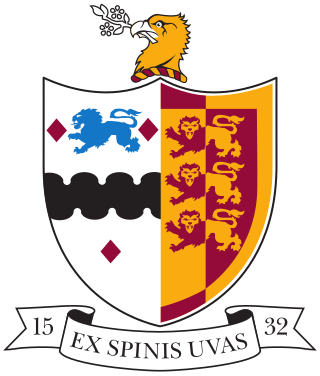
Bristol Grammar School (BGS) is a 4–18 mixed, private day school in Bristol, England. It was founded in 1532 by Royal Charter for the teaching of 'good manners and literature', endowed by wealthy Bristol merchants Robert and Nicholas Thorne who made their money through the work and trade of enslaved Africans. The school flourished in the early 20th century under headmaster Sir Cyril Norwood (1906–1916), embodying "the ideals and experiences of a leading public school". Norwood went on to serve as the master at Marlborough College and Harrow, and as president of St John's College, Oxford.

Tyntesfield is a Victorian Gothic Revival country house and estate near Wraxall, North Somerset, England. The house is a Grade I listed building named after the Tynte baronets, who had owned estates in the area since about 1500. The location was formerly that of a 16th-century hunting lodge, which was used as a farmhouse until the early 19th century. In the 1830s a Georgian mansion was built on the site, which was bought by English businessman William Gibbs, whose huge fortune came from guano used as fertilizer. In the 1860s Gibbs had the house significantly expanded and remodelled; a chapel was added in the 1870s. The Gibbs family owned the house until the death of Richard Gibbs in 2001.

Wraxall is a village in North Somerset, England, about 6 miles (10 km) west of Bristol. Until 1811 the parish of the same name also included Nailsea and Flax Bourton. The village is now within the parish of Wraxall and Failand.

King's College is a private co-educational secondary boarding and day school in Taunton, Somerset, England. A member school of the Woodard Corporation, it has approximately 450 pupils aged 13 to 18, including about 300 boarders. Its affiliated prep school is King's Hall School. The head of the school is currently Michael Sloan, who started his first academic year in the winter of 2022.
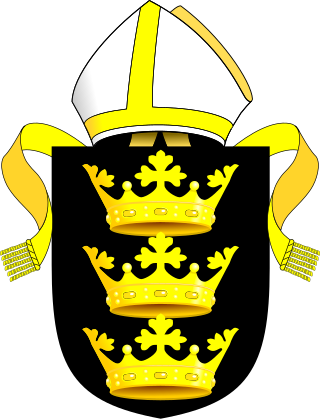
The Diocese of Bristol is an ecclesiastical jurisdiction or diocese of the Church of England in the Province of Canterbury, England. It is based in the city of Bristol and covers South Gloucestershire and parts of north Wiltshire, as far east as Swindon. The diocese is headed by the Bishop of Bristol and the Episcopal seat is located at the Cathedral Church of the Holy and Undivided Trinity, commonly known as Bristol Cathedral.
Eustace Hubert Beilby Gibbs, 3rd Baron Wraxall,, was a British diplomat and hereditary peer who succeeded his brother, Richard Gibbs, 2nd Baron Wraxall, on 19 July 2001.
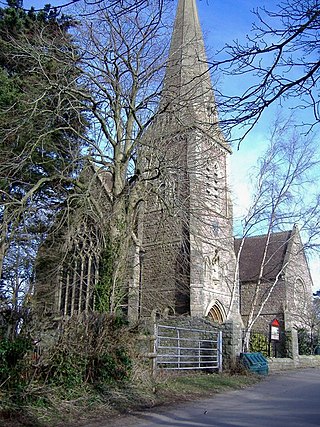
Failand is a village in Somerset, England. It lies within the civil parish of Wraxall and Failand and the unitary authority area of North Somerset.
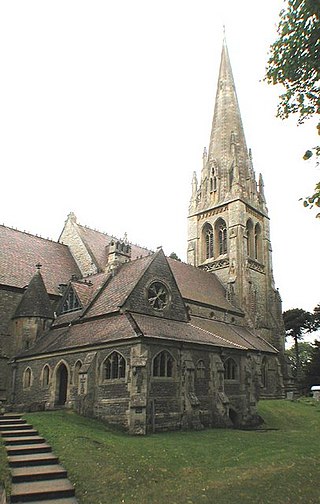
Henry Woodyer (1816–1896) was an English architect, a pupil of William Butterfield and a disciple of A. W. N. Pugin and the Ecclesiologists.
Halls of residence at the University of Bristol are generally located within three distinct areas of Bristol, the City Centre, Clifton and Stoke Bishop.

Children's Hospice South West (CHSW) is a registered charity that provides palliative, respite, end of life and bereavement care for life-limited and terminally ill children and their families from the South West England region. It oversees three of the 41 children's hospices in the United Kingdom.

All Saints' Church is the parish church in Wraxall, Somerset, England. It has been dedicated "to all the Saints". The building is surrounded by an extensive cemetery.

John Norton was an English architect who designed country houses, churches and a number of commercial buildings.

The Land Yeo is a small river which flows through North Somerset, England. It rises on Dundry Hill and supplies Barrow Gurney Reservoirs before flowing through various villages to Clevedon where it drains into the Severn Estuary. During the past 1,000 years it has powered at least ten watermills, however only one is still functional. Since 2003 initiatives have been undertaken to clean up the river, improving water quality and encouraging wildlife.
Antony Gibbs & Sons was a British trading company, which was founded by Antony Gibbs in 1808 in London. The company's interests spanned trading in cloth, fruit, wine, guano, and nitrate, which led to it becoming involved in banking, shipping and insurance. Having been family-owned from its foundation, by the turn of the 20th century it was focused on banking and insurance rather than inport and export.
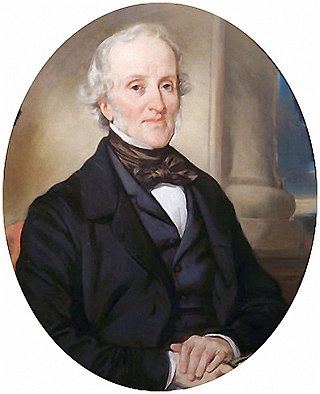
William Gibbs (1790–1875) was an English businessman, best known as one of three founding partners in Antony Gibbs & Sons, a religious philanthropist, and the owner who developed Tyntesfield in Wraxall, North Somerset.
Philip Oliphant Kington was an English businessman and landowner who inherited a Scottish clan chiefdom and also played a single first-class cricket game in Australia. From 1867, when he inherited Ardblair Castle in Scotland from his maternal Oliphant relatives, he took the triple-barrelled name "Kington-Blair-Oliphant". He was born at Clifton, Bristol and died at Datchet, then in Berkshire, now in Buckinghamshire.

Blanche Gibbs also known as Matilda Blanche Gibbs or Matilda Blanche Crawley-Boevey, was an English philanthropist, and a supporter of the Oxford Movement in 19th century England. Along with her husband, William Gibbs, a businessman, she funded the establishment and restoration of many churches and religious structures. After his death, as the inheritor of his estate, she expanded her philanthropy towards social and welfare efforts including the creation of convalescent homes, hospitals, and educational institutions.















